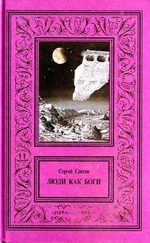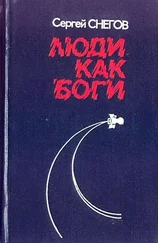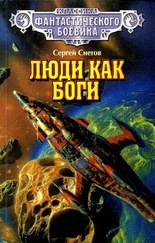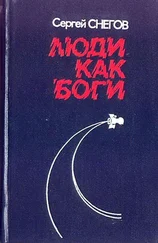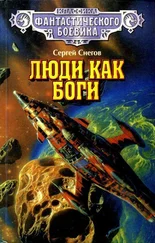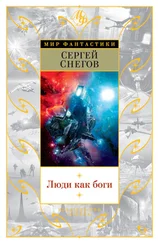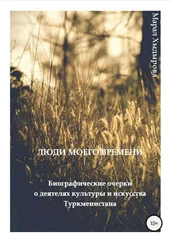54. Bell Ch.The Religion of Tibet, Oxford, 1931.
55. Bustоn. History of Buddhism. Transl. from tibetan by E. E. Obermiller, Heidelberg, pt 4. 1931, pt 2, 1932.
56. Carrasсо P.Land and Polity in Tibet, Seattle, 1959.
57. Cassinelli C. N. and Ekvall R. B.A Tibetan Principality. The Political System of Sa Skya, New York, 1969.
58. Demieville P.Le Concile de Lhasa, Paris, 1952.
59. Desideri J.An Account of Tibet, London, 1932.
60. Duncan Marion H.Customs and Superstitions of Tibetans, London, 1964.
61. GoldsteinMelvyn C. Taxation and the Structure of Tibetan Village, — «Central Asiatic Journal», 1971, vol. XV, № 1.
62. Franсke A. H.The Chronicles of Ladakh and Minor Chronicles, — «Archeological Survey of India», New Imperial Series, Calcutta, 1926, 50.
63. Franсke A. H.History of Western Tibet, London, 1907.
64. Haarh E.The Yarlung Dynasty, Kobenhavn, 1969.
65. Hitti Ph. K.History of Arabs, London, 1956.
66. Hoffman H.Religion of Tibet, London, 1961.
67. Hummel S.Eurasiatische Traditionen in der tibetischen Bon Religion, — «Opuscula ethnologica memoriae», 1959, № 117.
68. Jataka or Stories of the Buddha’s Former Births. Transl. by E. B. Cowwell, London, vol. 1–6, 1895–1913.
69. Laufer B.Über ein tibetischen Geschichtwerk der Bonpo, — «T’oung Pao», Leiden, 1901, vol. II, ser. 2.
70. Li Fang-kuei.The Inscription of the Sino-Tibetan Treaty of 821–822, — «T’oung Pao», 1956, vol. XLIV, livr. 1–3.
71. The Memoirs of His Holiness The Dalai-lama of Tibet. My Land and my People. Ed. by David Howath, London, 1962.
72. Pelliоt P.Quellques transcriptions chinoises de noms tibetains, — «T’oung Pao», Leiden, vol. XVI, ser. 2, 1915.
73. Petech L.China and Tibet in the Early 18th Century, Leiden, 1950.
74. Richardson H. E.Ancient Historical Edicts of Lhasa, vol. XIX, London, 1952 (Prize publication found).
75. Richardson H. E.Tibet and its History, London, 1962.
76. Rockhill W. W.The Dalai-lamas of Lhasa and their Relations with the Manchu Emperors of China, 1644–1909, Leiden, 1910.
77. Roerich G.Tibetan paintings, Paris, 1925.
78. Rona-Tas A.Tally-stick and Divination Dice in the Iconography of Lha-mo, — «Acta orientalia Academiae scientiarum hungaricae», Budapest, 1956, t. VI, fasc. 1–3.
79. Saunders E.Dale. Mudra. A Study of Symbolic Gestures in Japanese Buddhist Sculpture, New York, 1960.
80. Schmidt J. J.Geschichte der Ost-Mongolen und Ihres Fürsten Hauses, St.-Pbg, 1828.
81. Schuleman G.Geschichte der Dalai-lamas, Leipzig, 1958.
82. Shaкabpa W. D.Tsepon, Tibet, a political History, New Haven and London, 1967.
83. Snellgrove D. L., Richardson H. E.A Cultural History of Tibet, London, 1968.
84. Snellgrove D. L.Nine Ways of Bon, London, 1967.
85. Snellgrove D. L.Buddhist Himalaya, Oxford, 1957.
86. Stcherbatsky T.The Conception of Buddhist Nirvana, London, 1927.
87. Stein R. A.La civilisation tibétaine, Paris, 1962.
88. Tuссi G.The Sacral Character of the Kings of Ancient Tibet, — «East and West», Rome, 1955, № 4.
89. Tucci G.The Theory and Practice of the Mandala, London, 1961.
90. Tucci G.Tibetan painted scrolls, Roma, 1949.
91. Tucci G.The Tombs of Tibetan Kings, — «Serie Oriental», Roma, 1950, vol. VIII.
92. Uгау G.«Gren», the Alleged Old Tibetan Equivalent of the Ethnic Name Ch’iang, — «Acta orientalia hungaricae», 1966, t. XIX.
93. Uгау G.The Four Horns of Tibet, according to the Royal Annals, — «Acta orientalia hungarical», 1960, t. X, fasc. 1.
94. Waddell L. A.The Buddhism of Tibet or Lamaism, Cambridge, 1934.
96. Wood W. A. K.A History of Siam from the Earliest time to the Year 1781 A. D., London, 1926.
96. Rgyal-Rab Bon Kyi Jung Nas, ed. by S. Ch. Das, Calcutta, 1915.
97. Падма Катан («Сказание Падмы»). Тиб. ф. ЛО ИВАН АН СССР (ксилограф).
98. Туган Ловсан Чхойчиньима.Шей-джи Мелонг («Зеркало — кристалл истории всех учений»). Тиб. ф. ЛО ИВАН СССР (ксилограф).
99. Вэньсянь тункао («Всеохватывающий свод сокровищ литературы»), Шанхай, 1936.
100. Синь Тан шу («Новая история династии Тан»), Шанхай, 1935 (изд. серии «Сыбу бэйяо»).
101. Цзю Тан шу («Старая история династии Тан»), Шанхай, 1935 (изд. серии «Сыбу бэйяо»).
102. Чжунго фын шэн диту («Атлас карт Китая по провинциям»), Тяньцзинь, 1963.
103. Хоу Хань шу («История поздней династии Хань»), Шанхай, 1935 (изд. серии «Сыбу бэйяо»).
104. Юй Дао-цюань, Ди людай Далай-лама Цанъян Цзяцо цингэ (Лирические песни VI Далай-ламы Цаньян Джамцо), Бейпин, 1930.
«People and Gods in the Country of Snows» is a popular-scientific book on Tibet and Tibetan culture — a region with a remarkable and eventful history of fifteen hundred years. During the period stretching from the eighth to the ninth century, it attained political dominion in Central Asia. Tibetan culture exerted a far-reaching and deeply-rooted influence on the development of several Central-Asian peoples and their culture. The aim of the authors is to describe for the wider circle of readers, including those engaged in oriental studies and other fields of research, the past of this country, its people and their rich culture. The description is based upon the most recent results achieved in Tibetan studies, both Soviet and foreign.
Orientalists conducting researches in this field are aware, of course, that in the last ten or fifteen years a series of important works, both of a specialized and of a popular-generalized nature on traditional Tibetan civilization, have appeared in European languages. There is no necessity to enumerate them here. Books on the subject have also been published by Tibetan authors, written in some cases in collaboration with European and American scholars; they reflect the views of present-day Tibetan emigrants regarding their country’s history and its cultural-historical role in Asia. As may be supposed, these have been studied with the closest attention, particularly since some are found to contain a wealth of factual material hitherto unknown, or available to only a narrow circle of readers.
The book consists of five chapters: the first — «The Country of Snows», gives a concise geographical description of Tibet, its principal districts and their natural features; the second chapter, «People», is historical — beginning with archeological discoveries in a region which until 1950 was forbidden ground to archeologists — and ethnographical. The third chapter, «Gods», is an account of the two main religions traditional in Tibet — Bon and Buddhism. «People and Gods» (the fourth chapter) describes the culture of Tibet as the synthesis of its people’s cultural-historic life and religious conceptions.
Читать дальше


